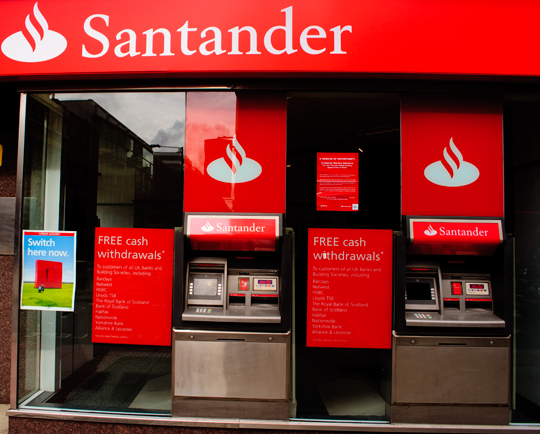News
Santander rate cut: is it time to ditch your 123 current account?

The decision by Santander to cut the interest rate on its 123 current account was inevitable. With rates halving, is it best to stick or switch?
Santander has announced it will cut the interest rate on its popular 123 current account to a flat 1.50% AER on any balance up to £20,000 from 1 November 2016.
For beleaguered savers struggling to find a decent rate of return on their money, the 123 account had been a breath of fresh air, offering 3% on balances between £3,000 and £20,000.
Even after Santander hiked the fee on 123 from £2 to £5 a month in January this year, people stuck with it.
The rate cut will leave many people questioning whether to stick with Santander or switch. If you’re one of them, here’s what you need to consider before you make any decisions.
Santander is getting rid of the tiered interest rate offered on the 123 account, (1% on balances of £1,000, 2% on balances of £2,000 and 3% on balances of between £3,000 and £20,000) in favour of a flat 1.50% AER.
The table below shows how you’ll be affected depending on how much money you have in your account:
Customers with small balances
If you have a balance on the smaller side, the good news is the flat rate means you will start to earn interest. At the moment, anyone with less than £1,000 receives no interest. But from November, these customers will receive 1.50%.
However, you will still need to pay the £5 per month fee.
So, if you have a balance of £1,000, under the new rules you will earn £15 (up from £10) a year. However you’ll pay £60 per year in fees. (See below for information on alternative high interest current accounts on smaller balances.)
Couples
With the Santander 123 account, your household can have multiple accounts – you can have one, so can your partner and together you can have a joint account.
That means if you have a combined £60,000 of savings, you could earn £900 a year, but £720 after the £180 of annual fees.
Cashback hunters
One benefit to the account that won’t be changing is the cashback deal.
The 123 account allows you to earn 1% cashback on water and council tax bills and on the first £1,000 of your Santander mortgage. It gives 2% cashback on gas and electricity bills, as well as Santander home insurance. You can also get 3% cashback on mobile and home phone bills, including paid for TV packages.
So what are your options and is it time to ditch the 123 account?
Savers will feel especially let down having relied on the account for better returns than currently available on standard savings accounts, which are paying 0.65% on average.
Susan Hannums, director of independent savings advisers Savingschampion.co.uk, says the key now will be to shop around to find the best accounts to meet your needs.
“Given the 123 comes with a monthly fee it’s vital to ensure that it’s being used effectively to negate the fee otherwise many savers may be better off opting for the very best easy access account.”
For example, someone with £20,000 saved earning 1.50% would receive £300 of interest in the year. But given that the monthly fee of £5 adds up to £60 over the course of the year, the real interest earned is £240 a year.
That same amount can be made with the RCI Bank’s easy access Freedom Savings Account paying 1.20% AER and there’s no monthly fee.
You can make more from a notice account but remember your money will be tied up whereas with the 123 you can access your funds at any time.
For example, you can earn 1.55% a year with Shawbrook Bank’s 120 days’ notice product.
Hannums says if you go down the restricted access route, you may want to opt for a one-year fixed rate bond at 1.5% from United Trust Bank. Although it ties your money up for longer, she suspects the Shawbrook notice account rate will fall following the drop in the base rate.
The other options are high interest paying current accounts but the balances are a lot lower – Lloyds Bank pays 4% AER on balances of between £4,000 and £5,000, TSB’s Classic Plus Account pays 5% AER on balances up to £2,000.
